
Each region suffers in its own way an unprecedented drought. Somewhere the forests are burning and in others, due to drought, on the contrary, there is a threat of flooding of large areas. How is this possible?
France: nuclear power plants cannot be cooled
In southwestern France, fires have forced thousands of people to leave their homes and move to regions less affected by the heat and drought. The flames have already reached an area the size of 11,000 football fields, according to news agencies. Due to the longest drought that has ever occurred in France, the French government has created a crisis headquarters that will monitor the drinking water situation in the country.
Fires continue in southwest France
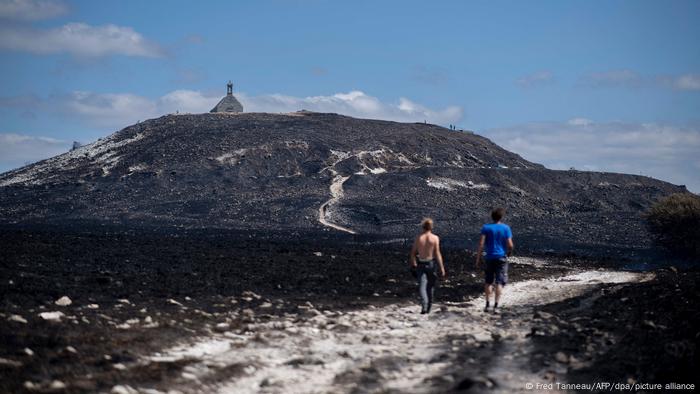
In western France. The ground is covered in ash after the fires
Forests are burning, crops are drying up, there are problems with the energy supply. To protect animals and plants, some nuclear power plants are no longer allowed or will soon be banned from using river water that has been significantly heated by many days of heat for cooling. In fact, after use, the water is again discharged into reservoirs, while the temperature of the discharged water is higher than it was before the reactor cooling process, and this is harmful to the environment.
As a result, the plants generate less electricity than planned. At the same time, nuclear power supervisory authorities allowed stations to exceed temperature standards up to a certain level. It has not yet reached a critical situation, but the degree of nervousness is increasing.
Spain: Farmers prepare for catastrophically low harvests
After months of no rain and record heat, the Vinuela reservoir in Malaga province is now only 12% full and has effectively turned into a large puddle. “The situation is dramatic,” say farmers who were forced a few weeks ago to minimize the amount of water from the reservoir used to irrigate farmland. The consequences are catastrophic: near the reservoir is the largest avocado plantation in Europe. And this evergreen fruit plant is now dying without water.

Vinuela Reservoir
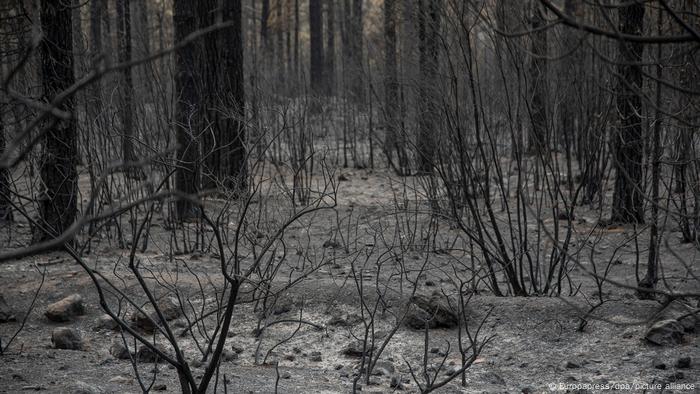
Forest on the island of Tenerife after a fire
The prospects for farmers in Spain this season are the bleakest: they must somehow prepare for a crop failure – morally and financially. For example, olive oil producers expect to harvest only half the usual crop, and this shortage will lead to an increase in the price of olive oil, which already costs a lot in Europe.
Netherlands: Drought damages dams protecting land from the sea
When they talk about problems arising from heat and drought, they often think of countries in the south: Spain, Portugal, France, Greece, Italy. However, the northernmost regions of Europe also suffer from record hot and dry summers.
Two-thirds of the population of the Netherlands lives in regions below sea level. Rotterdam and Amsterdam would have been flooded had there not been dams and drainage systems to protect the land from water. Many hundreds of kilometers of dams are built with peat, which is like a sponge: if the material dries by heat and drought, it becomes light and porous – holes and cracks can appear in the dams, which threatens their stability.
There have been no major dam failures this summer, but Dutch authorities have developed a contingency plan in case of extreme drought and are closely monitoring the dams, with water officials and volunteers walking along them looking for cracks. Each damage is fixed, if the autumn rains are not enough to “heal all wounds”, the dams will additionally be poured with water.

Then a small dam is poured with water from a canal
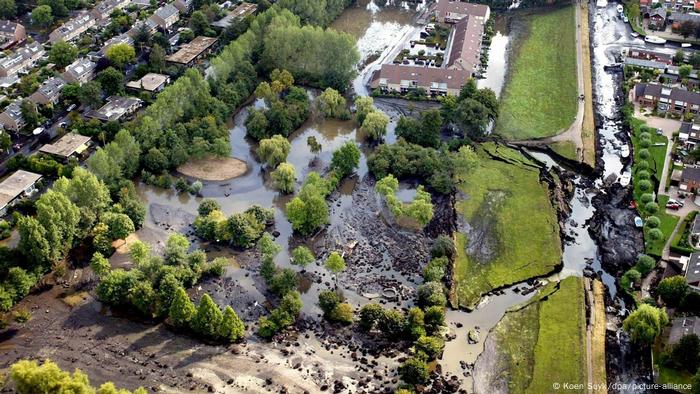
This is what a dam failure can threaten. Pictured – a dam rupture in Vilnis in August 2003
Small dams, built mainly inland along canals and rivers, are irrigated by special boats. Last week, a state of emergency was declared due to the drought in the Netherlands. The main task now is to ensure the safety of vital dams, secondly, to provide the population with a sufficient amount of high-quality drinking water.
In Amsterdam, the city’s dikes are watered with fire hoses to keep them moist and therefore sufficiently heavy.
Germany: trees wither, transport suffers
According to the Helmholtz Center for Environmental Research, in some parts of Germany we are already talking about an extreme drought of the highest alert level. According to Wetter.de, this summer is the driest of all since the beginning of weather records in the country in 1881. It far surpasses the summer of 2018, which was also very dry.
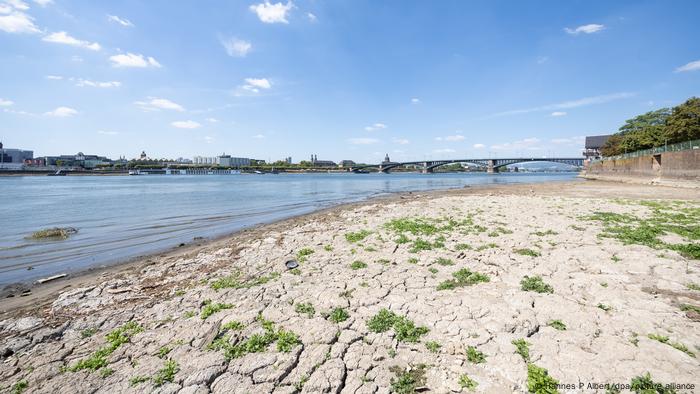
The bank of the Rhine near Mainz now looks like this
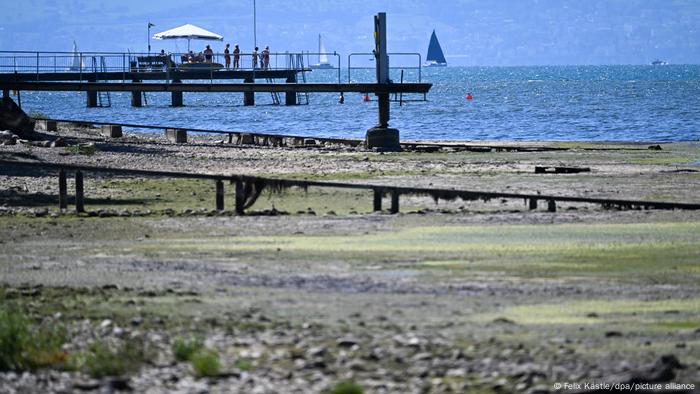
Lake Constance in southern Germany is also completely “dry”
The weather forecast for the next few days in Germany is disappointing: heavy rains are not expected.
Source: DW
Lori Barajas is an accomplished journalist, known for her insightful and thought-provoking writing on economy. She currently works as a writer at 247 news reel. With a passion for understanding the economy, Lori’s writing delves deep into the financial issues that matter most, providing readers with a unique perspective on current events.